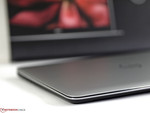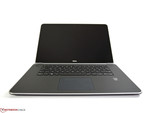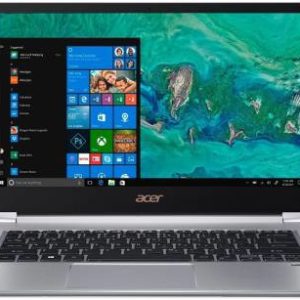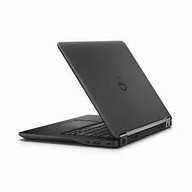16 gb ram Dell Precision M3800 alienware Workstation Refurbished
₹350,000.00 ₹60,000.00
Description
Dell Precision M3800 Workstation – Intel Quad-
Core i7-4702HQ 2.20GHz -16GB RAM – 500GB
SSD – Nvidia Quadro K1100M 2GB – Win 8.1
Pro – 15.6-inch (4k resolution ) Touchscreen
Genuine Import.
Review Dell Precision M3800 Workstation
Workstation to go. Dell’s Precision M3800 is an ultrabook-shaped mobile workstation, combining powerful components with a slim chassis. Our in-depth review will show whether this device is capable of delivering in all crucial fields, and not just in terms of looks.

For the original German review, see here.
Slim, good-looking ultrabooks have not only secured themselves a place on the wish list of private customers, but also on that of business users and professionals. Especially for representative purposes, these devices are much better suited than their rather chunky standard-issue business laptops. Lenovo’s ThinkPad S440 and Dell’s Latitude E7440 are typical examples of such business-orientated ultrabooks. Still, the Dell Precision M3800 takes this one step further, aiming at the market of powerful workstations. Luckily, no serious cuts seem to have been necessary, as the slim Precision M3800 comes with a quad-core CPU, Nvidia’s Quadro K1100M GPU, a high-resolution QHD+ display and a decent selection of ports. Net pricing starts at 1400 Euros (~$1912) and quickly reaches more than 2000 Euros (~$2730).
Our test device comes close to the high-end variant of the M3800, offering an Intel Core i7-4702HQ, an Nvidia Quadro K1100M (Optimus with Intel HD Graphics 4600), 16 GB of RAM, a 256 GB SSD plus a 500 GB HDD, the QHD+ display and Windows 8.1 Pro 64-bit. An identical Precision M3800 model available in Dell’s online store costs 1800 Euros (~$2459) (gross price: 2140 Euros; ~$2923), and will supposedly ship on March 3rd, 2014.
Case
The outer appearance of the device profits from the premium materials being used as well as from the extremely slim form factor. At first glance, it appears unlikely that powerful workstation components have been fitted into this ultrabook-like chassis with its height of just 20 millimeters (~0.8 inches, including the rubber feet) and a weight of no more than 2 kg (~4.4 pounds). Metal, glass, plastic and a rubberized surface around the keyboard have been used, working well together. The build quality is superb, further corroborating the high-end ambitions of the device. Small, even clearances are a welcome sight. The laptop does not creak (or emit other unpleasant noises). The palm rest as well as the keyboard deck do not wobble, and the same holds true for the hinges and the display lid (which is also rather torsion-resistant) as well. Unfortunately, the maximum opening angle of the display is too limited, which can be an issue during some usage scenarios. There is some warm air venting in between the display hinges and the chassis, and while we are no fans of this design choice, we did not notice any problems with it, even during continuous stress tests.
Connectivity
The variety of ports being employed by the Dell Precision M3800 cannot compete with most standard-sized workstations, but compared with ultrabooks, it offers quite a lot. HDMI and a Mini Display port are there for external monitors, but unfortunately, they are located too close to each other to use concurrently if you need to use adapters. This also holds true for the four USB ports, all of them including charging functionality, three of them USB 3.0. We are fond of Dell’s design decision to place the ports close to the rear end of the device, being less in the way when working with cables and adapters. The only unfortunate exception is the card reader, as memory cards protrude (by approximately 3 millimeters) which is not ideal when carrying the laptop around. The Precision M3800 comes without an ExpressCard slot or a proprietary docking port. This is especially aggravating since our test device already carries fewer ports than other workstations. At least, universal dock solutions can be connected via USB 3.0.
Vendor Information
- Address:
- No ratings found yet!
-
Sale!

Adapter Charger for A1344, A1330, A1342, A1172, A1181, A1184, A1244, A1278
₹3,500.00₹2,250.00 Add to cart -
Sale!

108 cm (43) Ultra HD (4K) LED Smart Android TV
₹45,000.00₹18,000.00 Add to cart -
Sale!

Dell Precision M6800 Laptop i5 i7 Nvidia Quadro workstation server 17 inches
₹95,000.00₹40,000.00 Add to cart -
Sale!

HP Elitebook 810 G3 Laptop Core i5 5th Gen x360 revolve Refurbished
₹142,500.00₹25,000.00 Add to cart -
Sale!

40″ FHD LED TV Flora
₹20,000.00₹8,500.00 Add to cart







Reviews
There are no reviews yet.